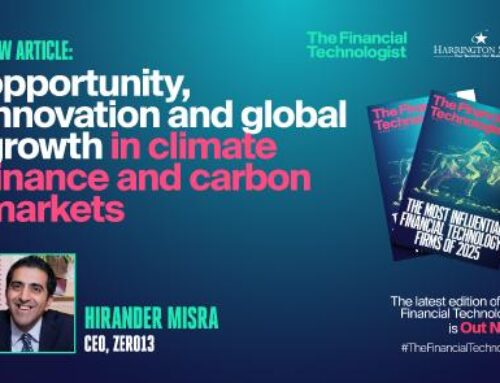In a recent webinar co-hosted by GMEX Group, Amazon Web Services (AWS) and DXC Luxoft, the main topic discussed by a panel of industry experts was how Traditional Finance (TradFi) needs to evolve and adapt to embrace Decentralized Finance (DeFi). In this article, we summarise two of the key themes discussed in relation to policy, notably regulation and data.
The use of digital assets and blockchain solutions have gradually become more prominent as the digital transformation of the financial services industry has progressed. As Finance 4.0 advances, there is an increasing demand to access a full range of digital products and services in tandem with traditional financial services. While the convergence of TradFi and DeFi unfolds, a kind of hybrid finance (HyFi) is emerging, albeit with challenges to address.
Tokenisation is steadily becoming more prevalent as a natural extension of TradFi for existing asset classes such as securities and commodities. In the long run, these kinds of disruptive models and non-centrally controlled assets will seamlessly coexist with the TradFi systems that we see in the financial ecosystem today. One of the overarching issues that HyFi encompasses is the lack of common standards and regulations across different jurisdictions. For instance, it is worth noting that taxonomy poses a significant challenge when trying to define and describe these different types of tokens in order to regulate HyFi. The USDC stable coin is an example of HyFi, since stable coins are cryptocurrencies in nature but without the notorious volatility that is often associated with digital assets. This volatility stems in part from the absence of a proper, universally-recognised set of regulations. Achieving such coordination is what makes this entire process challenging.
The regulatory system has to be robust yet flexible. Luckily, there is an increased understanding that regulation needs to be globally coordinated; regulators cannot merely act locally. Before putting this policymaking framework in place, we must understand why this ecosystem needs to be regulated. Is it for consumer protection? Is it for market stability? Is it to promote innovation? Or is it simply a combination of all three? And this all comes down to basic uniformity in classification and taxonomy. If definitions and descriptions are not universally congruent, it would mean loopholes, discrepancies and ambiguities within the different governing bodies. Leveraging technology as a regulatory mechanism could allow for automated compliance, which, once again, demands a globally coordinated approach. Given the pace of innovation, this is still an ongoing process but both public and private sectors need to collaborate in order to finalise a regulatory framework.
Another obstacle that needs to be addressed is data gaps. When it comes to cryptocurrency and the DeFi market, data gaps often impede policymakers’ ability to undertake projections and modelling. This is a rather consequential issue as data gaps mean that we may not know the extent to which something has had an impact, be it environmentally, socially, or economically. Public blockchains make data accessible to the public but understanding any of the data is the real challenge. Not all transactions happen on-chain with tokenisation, so there is one part of the ecosystem that has no reporting requirements, resulting in no data being recorded. On the flip side, sensitive data, such as financial data from traditional payment service providers, cannot flow freely due to data localisation requirements or restrictions. This means that when DeFi and TradFi ecosystems interact, some data does not travel and remains within a particular jurisdiction, making it unavailable to other countries for analysis and aggregation.
Consistent standards being developed across jurisdictions will be increasingly important to help facilitate this. Financial Action Task Force (FATF) guidelines suggest that Decentralized Applications (dApps) will need to comply with country specific laws enforcing FATF, Anti-Money Laundering, and Counter-Terrorism Financing requirements. These guidelines call for countries to identify individuals with “control or sufficient influence” over DeFi initiatives, which could potentially result in founders of such initiatives becoming subject to rules requiring them to provide beneficiary information relating to transactions. This form of regulated DeFi further suggests that, from a policy perspective, the approach to digital assets will have to be both centralized and decentralized, and as such hybrid.
With technology and policy blending, lines become blurry—and tech is becoming policy in the DeFi world. There is not enough technical expertise in the policymaking world, which makes it difficult for policymakers to aptly insert themselves into the regulatory landscape. For example, there is a lack of clarity on how data is captured: what are the standards? What are the methodologies? In a completely decentralized world, it becomes difficult to set benchmarks whilst taking into account possible conflicts of interest and ethical issues. Bridging the gap between TradFi and DeFi is very complex, where the evolution of HyFi will only emerge when a judicious blend of tech and policy occurs. To enable this, there is an opportunity for institutions to use technology to more efficiently integrate these various elements into traditional financial systems by using APIs with interoperability between this middle orchestration layer and multiple blockchains.
For a case study example of this in action, please refer to this recent AWS and DXC Luxoft Cloud Leadership Series article titled “Simplifying and accelerating access to digital assets marketplaces”, featuring our project with GMEX MultiHub.




